VertueYachts-April 2019 Newsletter
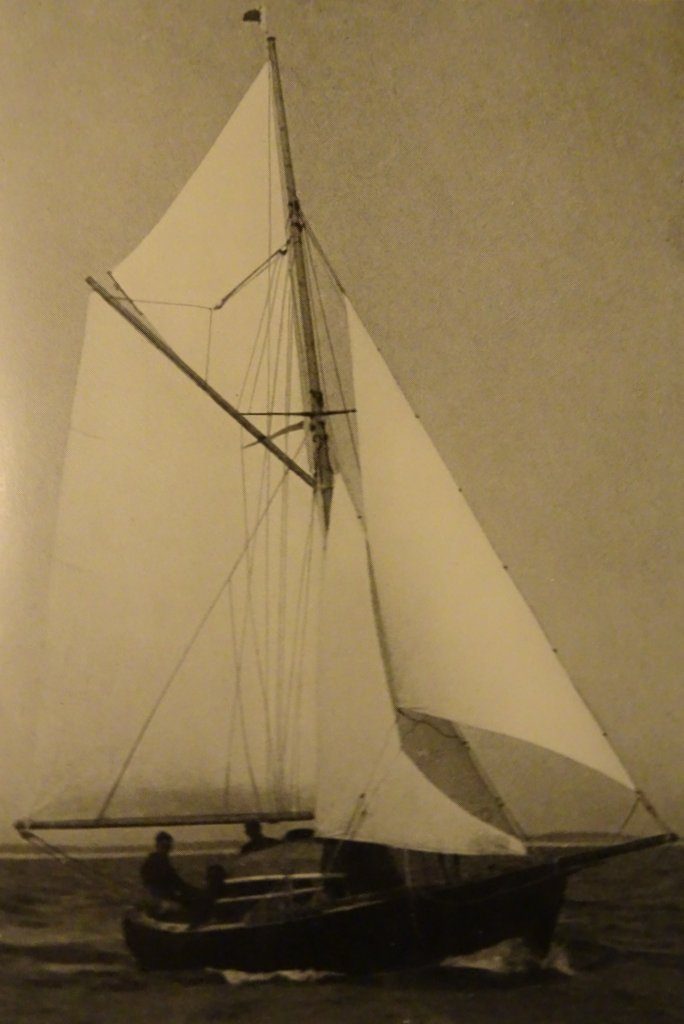
Last year’s Newsletters were a bit thin on the ground so this year we are starting with some thoughts on how the famous Vertue design might first have been conceived. I must apologise to both my readers for the dearth of real ‘news’ last year. Apart from the modest, ‘vertuous’ thoughts that might occur to me from time to time, I can really only pass on such reports as you care to send me about your boats. So please do send me some more, using speedwelltwo@gmail.com !

Andrillot under full sail
It is well known that Jack Giles designed a small cruising boat for Dick Kinnersley in 1935, supposedly based on the concept of a miniature pilot cutter working boat. She was called Andrillot and was conceived alongside Eric Hiscock’s slightly more extreme gaff cutter Wanderer II. When they raced each other the following year, shortly after their launch, there was little to choose between them. In 1937 Andrillot was chartered by Humphrey Barton for a summer cruise ‘down Channel’ with his wife Jessie. Clearly Barton was a driver and he succeeded in covering 855 miles in 23 days. From a description of the ‘cruise’ it is clear that Jessie, too, was no mere passenger, and egging Humphrey onwards, they visited over twenty anchorages in that time. The Andrillot’s ‘auxiliary’ was a sweep which enabled steerage way to be kept in a calm by using the ‘crutch’ which was ‘fitted to the taffrail for the purpose’. This was the design that formed the basis of what later became the Vertue class.
However, the following year the Bartons ‘delivered’ the new, Bermudan rigged Monie, from Lymington to Pwllheli in only 25 days, sailing north about via the Caledonian Canal. They had some wild weather off the northeast coast of Northumberland and after one particularly stormy passage Humphrey Barton wrote:
“This experience, short as it was, had shown us in the most decisive manner that the modern Bermudan stem-head rig with mast well into the ship is a more seamanlike and sounder proposition in heavy weather than the gaff rig.
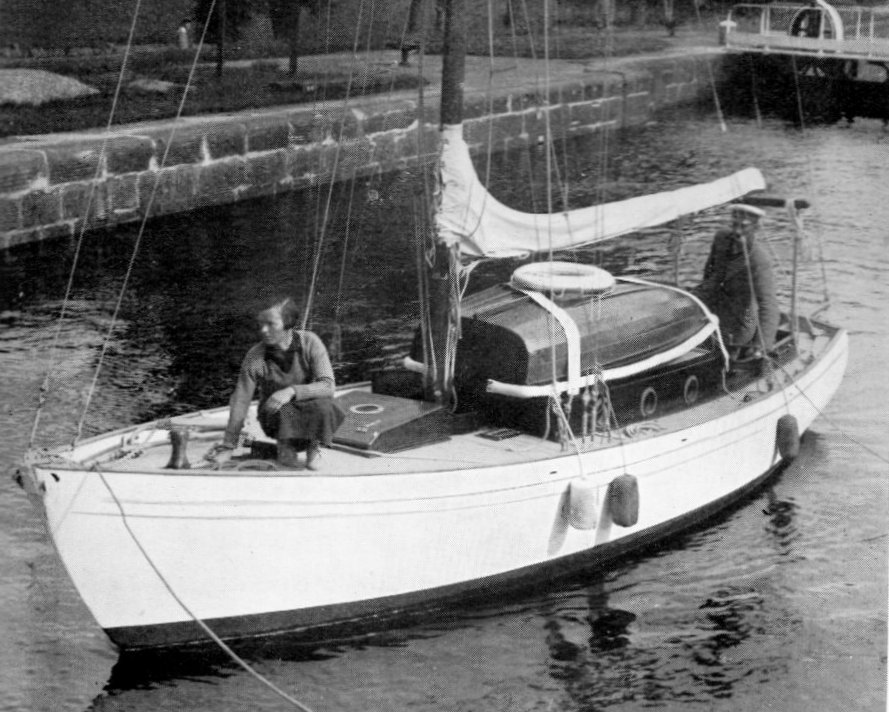
Humphrey & Jessie Barton aboard Monie in the Caledonian canal.
Andrillot with a reefed mainsail could not possibly have worked to windward in such conditions. The combination of wind, tide and sea would have been too much for her and she would have made no progress until the tide had turned or the wind eased. The very fact that these short-ended boats have to carry a bowsprit if gaff-rigged is almost enough in itself to condemn the rig.”
Whilst Andrillot clearly has ‘pilot cutter’ working boat genes in her design, Jack Giles had already drawn a very shapely little weekend cruising boat for Solent waters five years before. This design, of the Lymington ‘L’ class, must also have been considered during the initial discussions between Andrillot’s owner and architect. Last autumn I was reminded how similar the two designs are during a chance encounter in Howth, Ireland. I had gone to Howth to see for myself the actual pier head where the landing of the German Mauser rifles from Erskine and Molly Childers’ beautiful yacht Asgard had taken place in July 1914.

Iduna in Howth
Returning past the local yacht club marina my eye was caught by a small yacht with the unmistakable outline of a Laurent Giles masthead sloop, complete with inner forestay, two pairs of spreaders and a bumkin. A Vertue? I rushed around to the clubhouse to be met with the usual effusive welcome I had come to expect in this wonderful country, and was duly invited to take as many photos as I wished of the little boat I had seen on the pontoon.
Approaching Iduna, as she was called, I admired her gleaming varnish, immaculate topsides and noted some of the usual details on deck that she shared with her Vertue sisterships. There were the two headstays close together just abaft the stemhead, the neat forehatch, the two pairs of spreaders on the wooden mast, the short, low coachroof of the early boats, the radiused after cockpit coamings, short after deck and single bumkin taking the standing backstay well clear of the raking transom. The cockpit seemed a bit larger than usual, though, and, hang-on a minute, there was no bridge-deck….. Then the penny dropped! The transom was just much finer, the bow profile that little bit more drawn out, the cockpit was a bit bigger, the coachroof shorter, with portlights that were elliptical not round…… and where was the thickened sheerstrake, that ultimate signature of the Vertue, to be used later throughout a range of Giles designs…..?
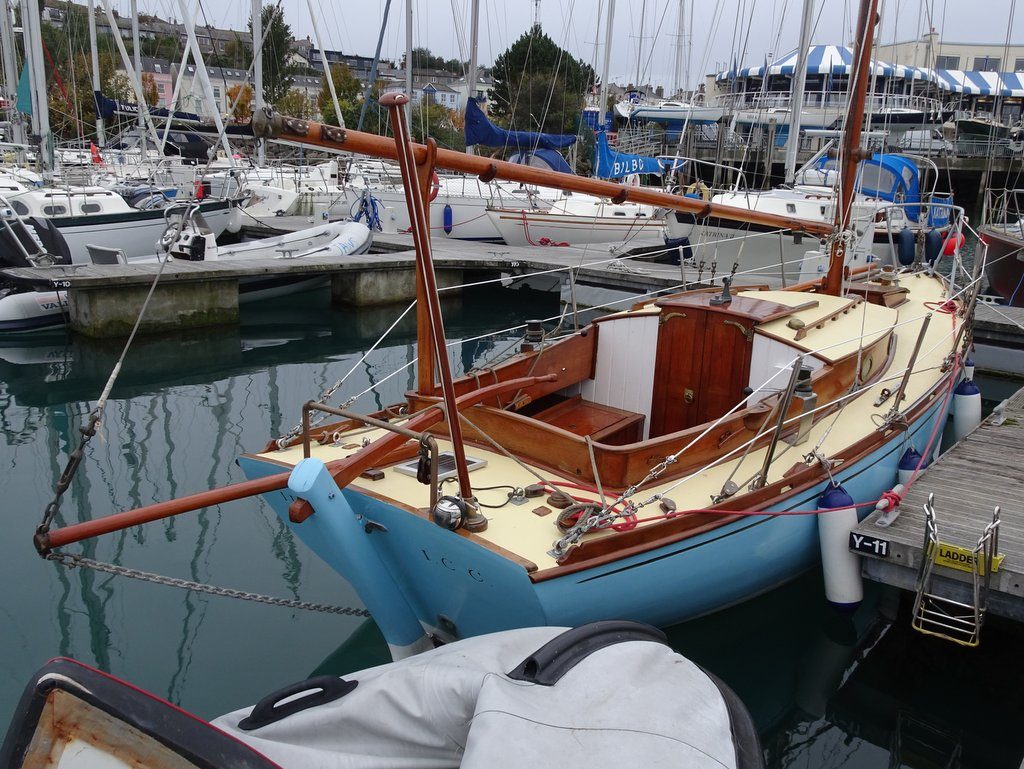
The beautifully restored Iduna
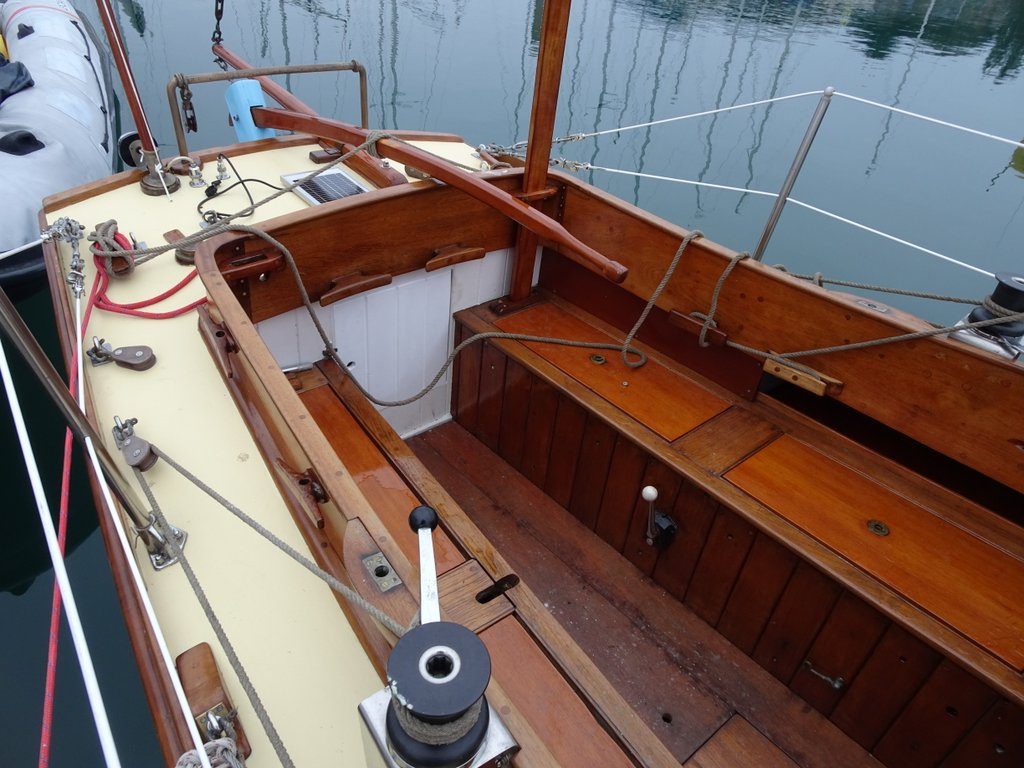
Nice large cockpit for day sailing ……
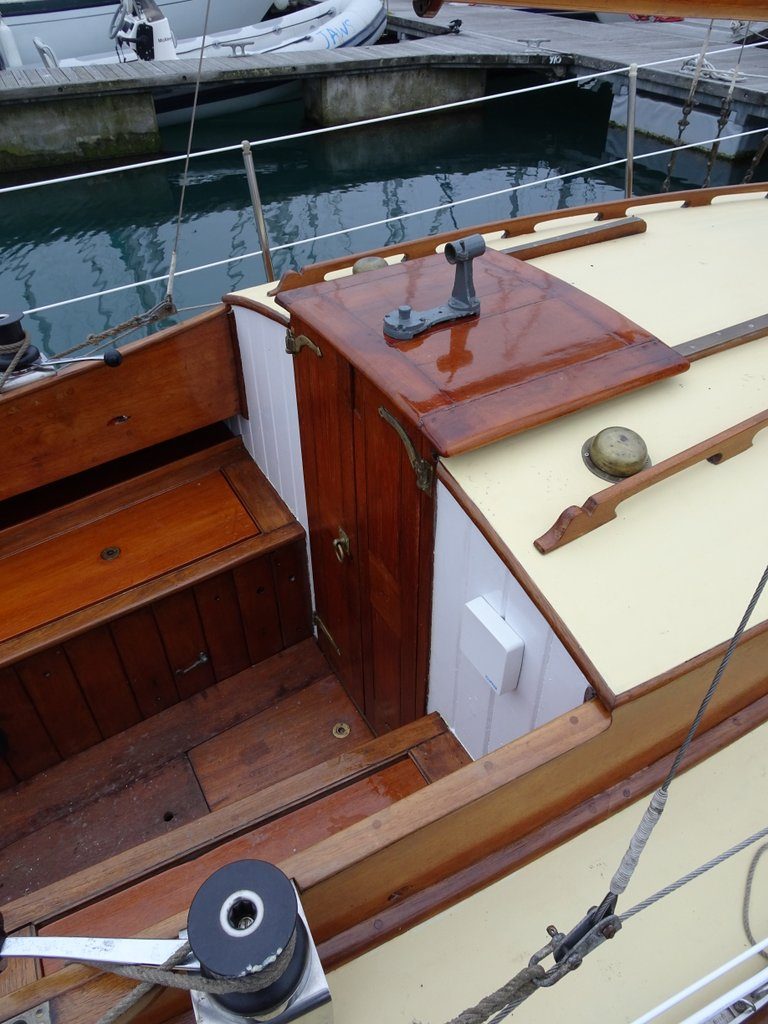
…..but no bridgedeck
Of course I should have known better, and once I stood back and noted the differences rather than the similarities, all became clear. For where Andrillot’s principal dimensions are 25’x 21’6”x7’2”x4’5”, those of Iduna are 23’3”x19’6”x6’10”x3’8”, so the earlier boat is a little bit smaller all round. But it is when you compare the displacements of 4.28 as against 2.7 tons that Laurent Giles’ genius is revealed. For we all know that Vertues are slippery and yet within these modest dimensions has now been fitted a four berth, proven ocean-going yacht, complete with galley, chart table and a separate heads compartment. So my main point is that whilst Jack Giles had indeed lifted the lines of the famous French pilot cutter Jolie Brise less than ten years before, (and undoubtedly studied them intensely), the lines of the first Vertue must also have been influenced by close observation of the way that little fleet of rather lighter boats that raced regularly off the Lymington River in the early 1930’s, had behaved.
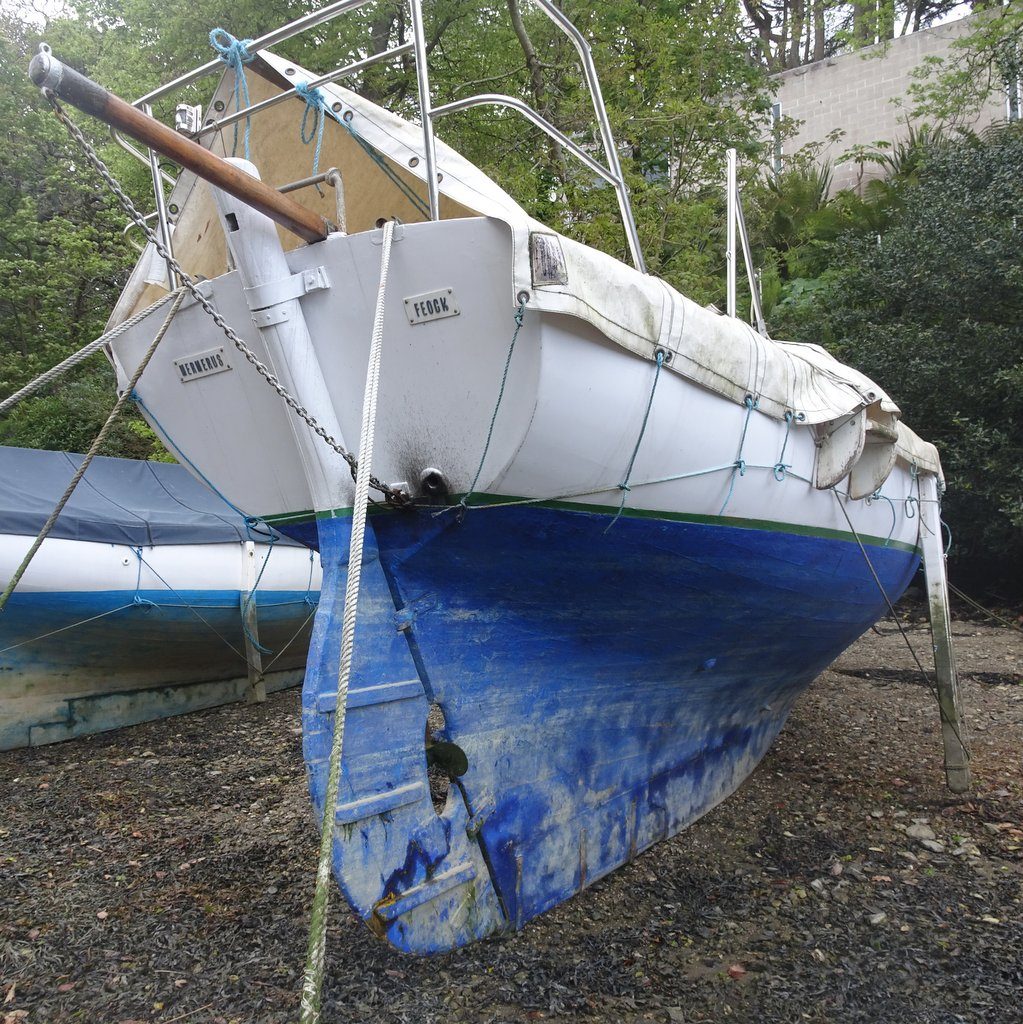
Another fine-lined Lymington L class Mermeris
Meanwhile Chris Jones has been in touch to ask if there is an accepted Handicap rating figure for Vertues. He has just relaunched Contessina, V121, which has been laid up for five years, whilst completing a circumnavigation aboard another boat. Contessina is one of the dozen or so Cheoy Lee built boats to be imported and sold in the UK by Denis J. Hoolahan, whose yacht brokerage became sole distributor for the Hong Kong builders in the mid 1960’s. Chris is planning to join the handicap racing in the Menai Straits this season but doesn’t have a recognised rating for the boat. Having checked out the Portsmouth Yardstick numbers list, and Peter Woolass’ ‘Blue Book’, without success, I’m stumped. Can anyone help, please?
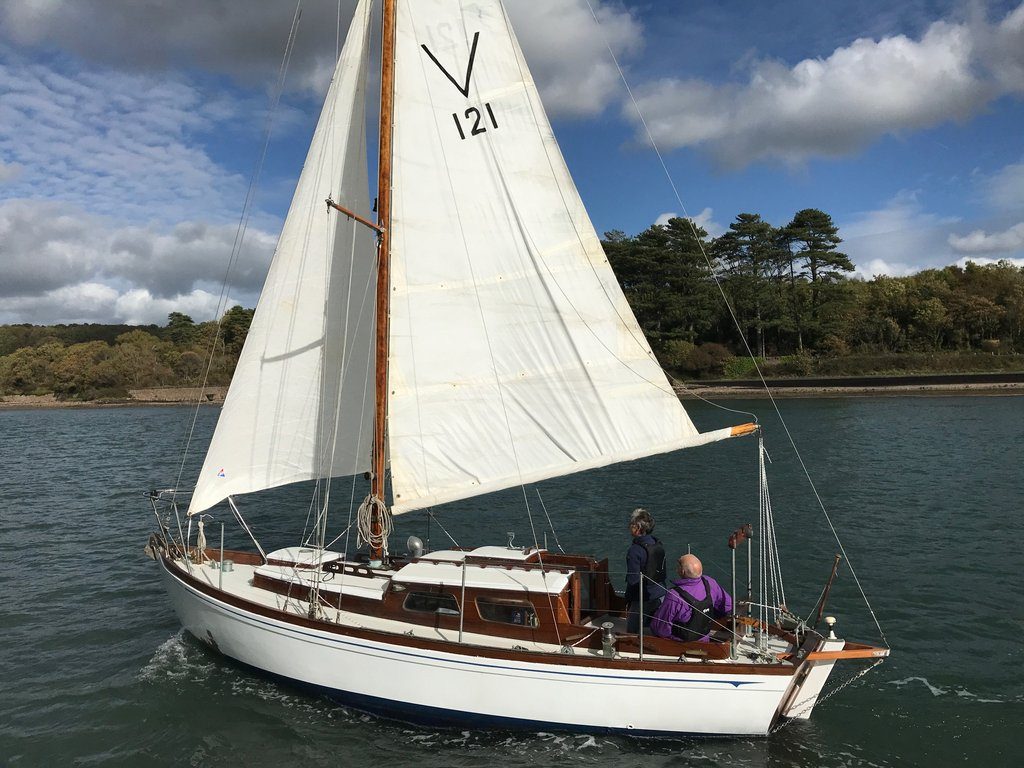
Contessina well reefed.
My own boat Raumati is still sadly for sale. I have done some more work to her, I am now very keen to find her a good home. I have therefore decided to reduce the asking price to £10,800! I will respond to all enquiries, so please don’t hesitate to get in touch, either here at speedwelltwo@gmail.com , or via the Rightboat website RB217517 where her full details and photos are available to view.
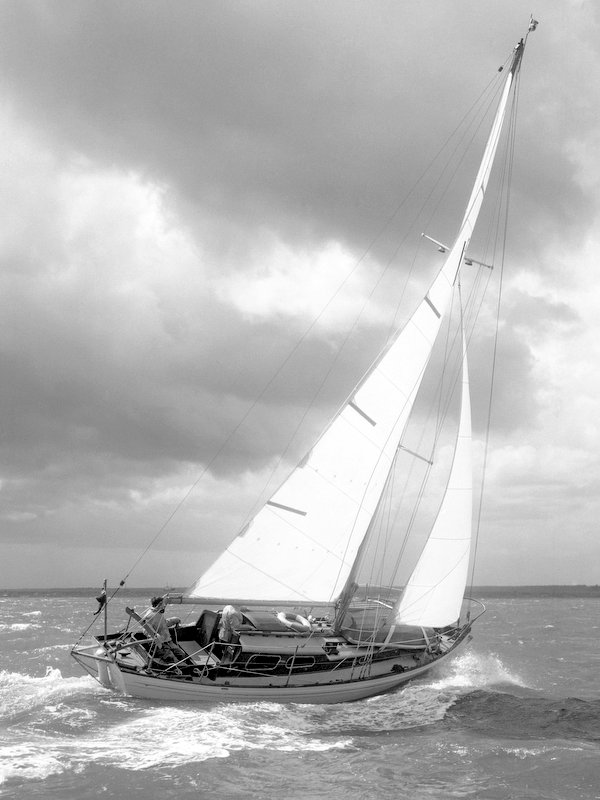
A Beken portrait of Raumati shortly after her launch in 1962
